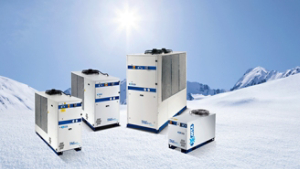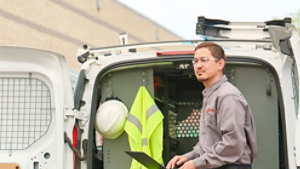Project Highlights
Location: Dighton, Massachusetts
Industry: K-12
Topic: Efficiency, Energy Services, Financial Solutions, Solar
- Lack of available capital
- System failures resulting in comfort issues and ventilation problems
- Trane Performance Contract
- Oil-fueled and gas-fired condensing boilers
- Rooftop units
- Classroom unit ventilators
- Solar photovoltaic carports
- Woodchip-fueled biomass boiler plant
- Building envelope improvements
- Lower operational costs
- Reduced environmental impact
- $16.62M in energy savings, utility rebates, revenues from renewables
- Solar solution expected to provide 75 percent of electricity
Dighton-Rehoboth Schools
Challenge
Years of deferred maintenance due to a lack of available capital was taking a toll on Dighton Rehoboth Regional School District (DRRSD) facilities. In addition, energy cost increases coupled with aging equipment resulted in continually rising operational expenses. The district sought to improve the learning environment, gain control of and minimize operating costs—especially energy spend, and to employ renewable energy generation as part of the program.
Solution
DRRSD began researching solutions to address its district-wide challenges. The district became aware of an alternative procurement model in Massachusetts—M.G.L. CH25a, 11i—Performance Contracting, where a single provider develops, designs and implements facility improvements to be paid in whole, or in part through guaranteed energy savings. DRRSD learned of Trane’s offerings and extensive experience successfully delivering performance contracts to schools. “Trane’s Performance Contracting solution was attractive to us,” said Catherine Antonellis, business manager, DRRSD. “It allowed us to reduce energy costs and use guaranteed energy savings to pay for upgrades.”
DRRSD advertised a Request for Qualifications and selected Trane. “I talked with administrators in a nearby district,” added Dr. Anthony Azar, superintendent, DRRSD. “They provided a good recommendation. I felt we would be in good hands with Trane.”
Identifying and prioritizing opportunities
DRRSD and Trane initiated a detailed audit to pinpoint needs and the range of opportunities available. Trane developed a comprehensive menu of energy conservation measures and facility improvements, including firm installation costs and energy savings for each item. This enabled DRRSD to map out a plan to implement projects in phases, to align with operational, administrative and fiscal needs.
“The team worked well together,” said Dave Nappi, facilities manager, DRRSD. “I knew where the mechanical issues were, and had concrete ideas of what needed to be done. Trane pointed out some other things that could provide additional savings.”
Implementing a comprehensive upgrade with renewable energy solutions
The selected upgrades included high-efficiency oil and propane boilers, new HVAC equipment, including rooftop units and 128 classroom unit ventilators, a state-of-the-art digital building automation system, a biomass (woodchip) boiler, new windows and roofs for two schools and a 1.2 MW solar PV system comprised of twelve well-lit carport canopies in parking lots of five schools. The nearly $19M in improvements will reduce annual energy spend by at least 62 percent while measurably improving the learning environment throughout the district.
“Adding photovoltaic carports served two purposes,” said Azar. “Not only do they provide energy savings, but they also add lighting to our parking lots. We now feel much safer when leaving at night.”
“We spoke about solar for years,” said Antonellis. “The Performance Contracting process helped us realize solar energy was viable. Trane was a great partner and helped us to secure substantial state incentives for implementing solar solutions.”
Managing systems and energy use
A web-enabled Trane® Tracer® Ensemble™ building management system provides an enterprise-wide view of district buildings for daily operations, troubleshooting, and energy management. Facility managers access systems remotely using their mobile device to address comfort issues, make schedule changes, adjust set points, and manage alarms. Ensemble also enables DRRSD to collect data and monitor performance to identify areas for improvement. “Our schools used to all have different controls; now we can access and operate everything with the Tracer,” said Nappi. “We also can now measure and control CO2 in the classrooms and continuously exchange precise quantities of outside air to improve air quality.”
Results
Under the Trane Performance Contract, DRRSD initiated a five-phase process to enhance comfort, reduce energy use, and lower operational costs. The upgrades have helped to reduce hot/cold calls and improve indoor air quality. Renewable energy will reduce environmental impact of the facilities, with solar expected to provide 75 percent of overall electricity for the district. Economic benefits are projected to include more than $16.62M in guaranteed energy savings, utility rebates, and renewable incentives from the Commonwealth of MA over the term of the agreement.
“Our energy cost reductions are exceeding projections,” said Antonellis. “We’ve been able to reinvest savings into long-lasting improvements that have put our schools in a very good position to continue our mission for the next 25-30 years.”
“It’s a win for the school district, our students, and our community,” added Azar.
About Dighton Rehoboth Regional School District
The Dighton Rehoboth Regional School District (DRRSD), in southeastern Massachusetts, serves 2,900 PK-12 students in five buildings—two elementary schools, two middle schools and one high school. With its focus on building a “Pathway to Excellence” for all children, DRRSD’s two overarching goals are to increase achievement for all students and maintain fiscal stability for the Dighton and Rehoboth communities. To achieve these objectives, the district works collaboratively with its communities and parents, believing that involvement and communication are key to increasing the home/school partnership.

































































































